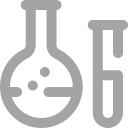
Product Description
NK-92 and this derivative cell line NK-92MI have the following characteristics: surface marker positive for CD2, CD7, CD11a, CD28, CD45, CD54 and CD56 bright; surface marker negative for CD1, CD3, CD4, CD5, CD8, CD10, CD14, CD16, CD19, CD20, CD23, CD34 and HLA-DR. The parental IL-2 dependent cell line is available as NK-92. NK-92MI was shown to contain, express, and synthesize the hIL-2. A culture submitted to the ATCC in September of 1998 was found to be contaminated with mycoplasma. Progeny were cured by a 21-day treatment with BM Cycline. The cells were assayed for mycoplasma, by the Hoechst stain, PCR and the standard culture test, after a six-week period following treatment. All tests were negative. ATCC confirmed this cell line is positive for the presence of Epstein-Barr viral DNA sequences via PCR.

Information
ApplicationThe cell line is cytotoxic to a wide range of malignant cells
it kills both K562 cells and Daudi cells in chromium release assays.
TissueHuman peripheral blood
blood
Morphologylymphoblast
Growth Propertiessuspension, multicell aggregates

Specifications
Complete Growth MediumMEMα (PM150421)+0.2mM Inositol+0.1mM β-mercaptoethanol (PB180633)+0.02mM Folic Acid+12.5% HS (164215-100)+12.5% FBS (164210-500)+1% P/S (PB180120)
Subcultivation Ratio1:2-1:4
Medium Renewalevery 2 to 3 days
CryopreservationFreeze medium: 60% Basal medium+30% FBS+10% DMSO
Storage temperature: Liquid nitrogen vapor phase
Culture ConditionsAtmosphere: Air, 95%; CO2, 5%
Temperature: 37℃
DurationThe cell line is cytotoxic to a wide range of malignant cells; it kills both K562 cells and Daudi cells in chromium release assays.

Misc Information
SubculturingCultures can be maintained by the addition of fresh medium or replacement of medium. Alternatively, cultures can be established by centrifugation with subsequent resuspension at the subcultivation ratio of 1:2-1:3.